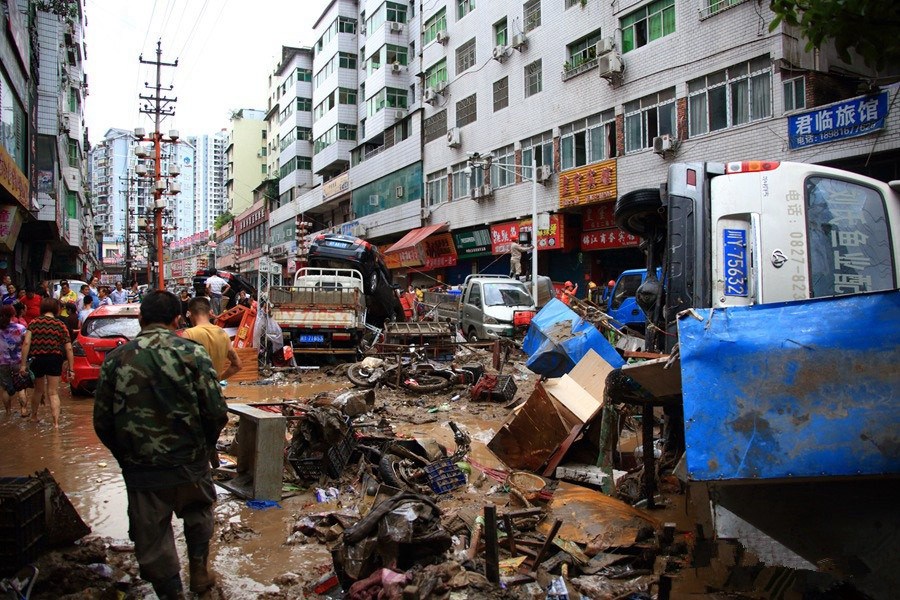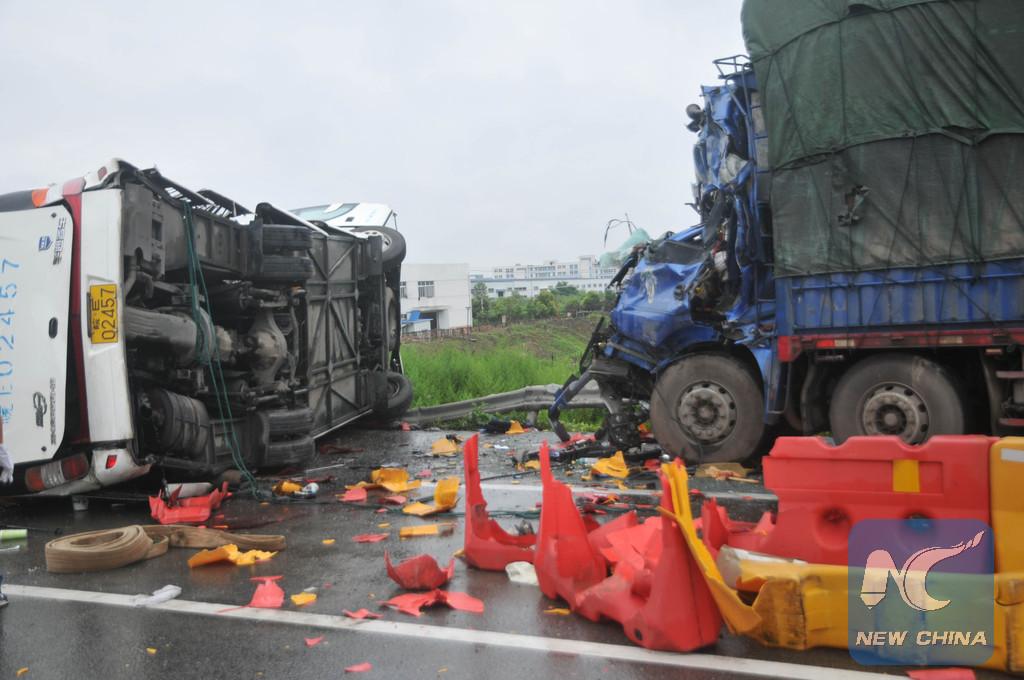
The remains of nine people killed Thursday in a plane crash in Southeast Alaska during a flightseeing tour were recovered Friday as federal officials continued their investigation into the cause of the wreck.
Alaska State Troopers late Friday released the names of the victims.
Troopers said the identifications were tentative pending positive ID by the State Medical Examiner’s Office. The victims' relatives were notified, troopers said.
Eight cruise ship passengers on a shore excursion were in the float-equipped de Havilland DHC-3 Otter when it crashed about 20 miles northeast of Ketchikan, against a rock face above remote Ella Lake in Misty Fjords National Monument.
The passengers had been aboard the Holland America Line cruise ship Westerdam, which docked Thursday in Ketchikan at the height of the city’s tourist season.
Promech Air, a Ketchikan-based charter and sightseeing service, operated the single-engine, turbine-powered plane. Promech sold shore excursions through Holland America, according to a statement from the Seattle-based cruise line.
‘Treacherous’ terrain
Brice Banning, National Transportation Safety Board investigator, described the site of the crash as "very treacherous” terrain.
Chris John, with the Ketchikan Volunteer Rescue Squad, confirmed about 5 p.m. that a team had tied down the plane and moved all remains to a Coast Guard boat waiting in a nearby bay.
"We're beginning to break down now and get everyone home," John said. "We haven't heard of any glitches. It just went really well."
John had anticipated earlier Friday that the terrain would pose challenges for the recovery team.
He said the plane rested at a steep angle in a “precarious” position about 800 feet above Ella Lake on the lake's west side. If the plane slipped, he said, it could fall about 100 feet before coming to a rest again.
Jerry Kiffer, president of the rescue squad, said helicopters dropped a crew into the area around 11 a.m. The crew hiked several hundred yards through slides and steep terrain, crossing a creek, before reaching an area above the crash site.
The team rappelled down the cliff, ran a cable through the plane and anchored it to the top of the cliff so the plane would not slip as the team went inside and brought out remains, Kiffer said.
Weather conditions on Thursday thwarted initial recovery efforts but improved significantly Friday, John said
Report of an overdue plane
Banning with NTSB said the cause of the crash has not been determined. He said he planned to fly to the scene Saturday to begin an investigation that will likely last several days. Afterward, responders will take the wreckage to Ketchikan to continue the investigation, he said.
The path the plane took before it crashed Thursday afternoon also remained unclear Friday. Clint Johnson, NTSB Alaska chief, said the plane was on its way back to Ketchikan when it crashed.
The plane had taken off after a stop in Rudyerd Bay in Misty Fjords, said a Promech Air representative.
Promech said the passengers were on the “Misty Fjords Wilderness Cruise & Flight,” a three-hour tour from downtown Ketchikan into Misty Fjords priced at $339 per person. It included a 30-minute “floatplane flight in a bush plane,” according to Promech Air’s website.
At 2:06 p.m. Thursday, troopers got a report that the plane was overdue. An emergency locator transmitter had activated in the vicinity of Misty Fjords, a vast wilderness marked by lakes, waterfalls, fjords and steep-sided glacial valleys.
The National Weather Service had reported scattered rain showers from about 9 a.m. to 3 p.m. Thursday at Ketchikan International Airport, with winds between 6 mph and 17 mph. Wind gusts hit 26 mph around noon.
Rob Murray, a pilot who flew with Promech Air between 2007 and 2013, called the flight loop into Misty Fjords “perfectly safe.” But he said gauging weather along the route could be difficult, unless there were cameras in the area or someone on the ground relaying information.
“You’ve got that big area in there where you’ve got to just fly it to see what the weather’s doing,” Murray said.
Friends and relatives phone in
On Friday, troopers said they “tentatively” identified the eight passengers and pilot killed in the crash using information from Promech Air, Holland America Line and photos provided to law enforcement.
Krill, the pilot, worked for Talkeetna Air Taxi last year, confirmed Paul Roderick, director of operations for the company.
As the crash gained national attention Thursday evening, Johnson said, friends and relatives of cruise ship passengers began phoning agencies involved in the response.
Callers grew concerned when they couldn’t reach the people they knew to be aboard the ship, but troopers spokesperson Megan Peters said part of that was likely due to the "lack of (cellular) connectivity in areas in Southeast Alaska.”
“It’s heartbreaking,” Peters said. “We’re doing everything we can to take care of (next of kin) notifications. While getting those names out will be a relief to so many people, it is still going to be tragic to the family and friends of those who died.”
Troopers said the medical examiner will make the official positive identifications.
Jason Grenn, spokesperson with the Alaska Department of Health and Social Services, said the remains of those killed in the crash will be sent to the Alaska State Medical Examiner’s Office in Anchorage.
The medical examiner will first work to identify them based on fingerprints and then work through dental records, he said.
“As Alaskans, it’s like, we’ve all been in float planes. We see them all the time; they’re just part of our lives,” Grenn said. “Then people are out enjoying our state and something horrible happens.”
About 9,600 cruise ship tourists daily
Patti Mackey, Ketchikan Visitors Bureau president and chief executive officer, described Promech Air as a “highly regarded company” and flightseeing as a “very popular” attraction with tourists. A majority of the flights go to Misty Fjords, she said.
Tourist season in Ketchikan typically spans from early May to late September, Mackey said. Cruise ships will dock in Ketchikan nearly 500 times this year and roughly three to five ships arrive each day, she said.
On Thursday, cruise ships brought about 9,600 passengers to Ketchikan, and many spent hours in town, she said.
About Thursday’s crash, Mackey said, “Our community is just heartbroken over the loss of lives and it affects everyone.”
The Westerdam left Ketchikan around 7 p.m. Thursday on its way back to Seattle, according to the cruise line. A representative said a team on the ship was offering counseling services.
The seven-day Inside Passage cruise left Seattle last Saturday, the cruise line said.
‘Float planes, they’re the lifeblood of the communities'
Aside from tourism, Mackey said float planes are important to many residents in Southeast Alaska, where communities are not connected to the state’s road system.
“Float planes, they're the lifeblood of the communities down here,” Mackey said. “We all live on islands and they're called air taxis because they just do so much.”
The aircraft involved in the crash, a de Havilland DHC-3 Otter, is known as a workhorse in Alaska bush flying. Production of the plane ended in 1967, but in recent years, many Otters have undergone turbine engine conversions, increasing power and performance. They can carry up to 10 passengers.
“This airplane is perfectly suitable for tourist applications,” said Jane Dale, executive director of the Alaska Air Carriers Association. Many Otters, she said, were used in a military capacity and served in the Vietnam War.
In 2013, a de Havilland DHC-3 operated by Rediske Air Inc.crashed at the Soldotna airport, killing all 10 people onboard. An Anchorage Daily News report from that time called it the worst aviation accident in Alaska in at least 25 years. NTSB said the plane may have been overloaded and unbalanced.
Former U.S. Sen. Ted Stevens, R-Alaska, was killed in a de Havilland Otter in 2010.
Promech Air said it was not flying Friday but planned to operate limited charter flights starting Saturday.
“Promech Air continues to grieve those who were lost in yesterday’s accident,” the company said in a statement. “Despite this difficult time, our employees are working around the clock supporting and assisting the loved ones of those affected.”
Saturday 27 June 2015
https://www.adn.com/article/20150626/team-begins-recovery-efforts-southeast-alaska-plane-crash-killed-9























